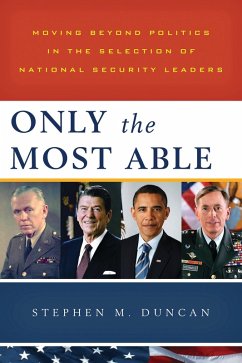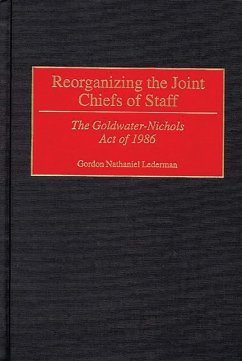
Winning the Peace (eBook, PDF)
The Strategic Implications of Military Civic Action
Versandkostenfrei!
Sofort per Download lieferbar
58,95 €
inkl. MwSt.
Weitere Ausgaben:

PAYBACK Punkte
29 °P sammeln!
Military Civic Action--U.S. troops working on nation-building tasks with troops of another country--is traced from its formal beginning under President Eisenhower and enthusiastic reception under President Kennedy, through its successes and failures during the Vietnam years, to its present status as a strategic tool. Contributing authors debate the future role of Military Civic Action as a way to retain a U.S. military presence around the world, bolster emergent democracies, assist other militaries in their transition to democratic military professionalism, reinforce the humanitarian efforts o...
Military Civic Action--U.S. troops working on nation-building tasks with troops of another country--is traced from its formal beginning under President Eisenhower and enthusiastic reception under President Kennedy, through its successes and failures during the Vietnam years, to its present status as a strategic tool. Contributing authors debate the future role of Military Civic Action as a way to retain a U.S. military presence around the world, bolster emergent democracies, assist other militaries in their transition to democratic military professionalism, reinforce the humanitarian efforts of USAID and private volunteer organizations, train U.S. units for worldwide flexible missions, and protect the world from environmental degradation and the scourge of drug abuse. Although this volume draws on the history of U.S. Military Civic Action around the world, special emphasis is placed on Latin America as the ideal focus for Military Civic Action during the 1990s. The authors argue that Military Civic Action is among the most cost effective ways of achieving U.S. strategic objectives while retaining and justifying the expense of a skilled, professional U.S. military force. Military Civic Action incorporates some of the deepest-held U.S. values and is a tool that can win the support of liberals and conservatives alike. Nonetheless, in order for it to be successful, Military Civic Action must be integrated into a fully articulated national strategy in which the Congress, the President, and the appropriate federal bureaucracies have reached consensus. This book will be of interest to military professionals and political scientists interested in foreign and defense policy.













